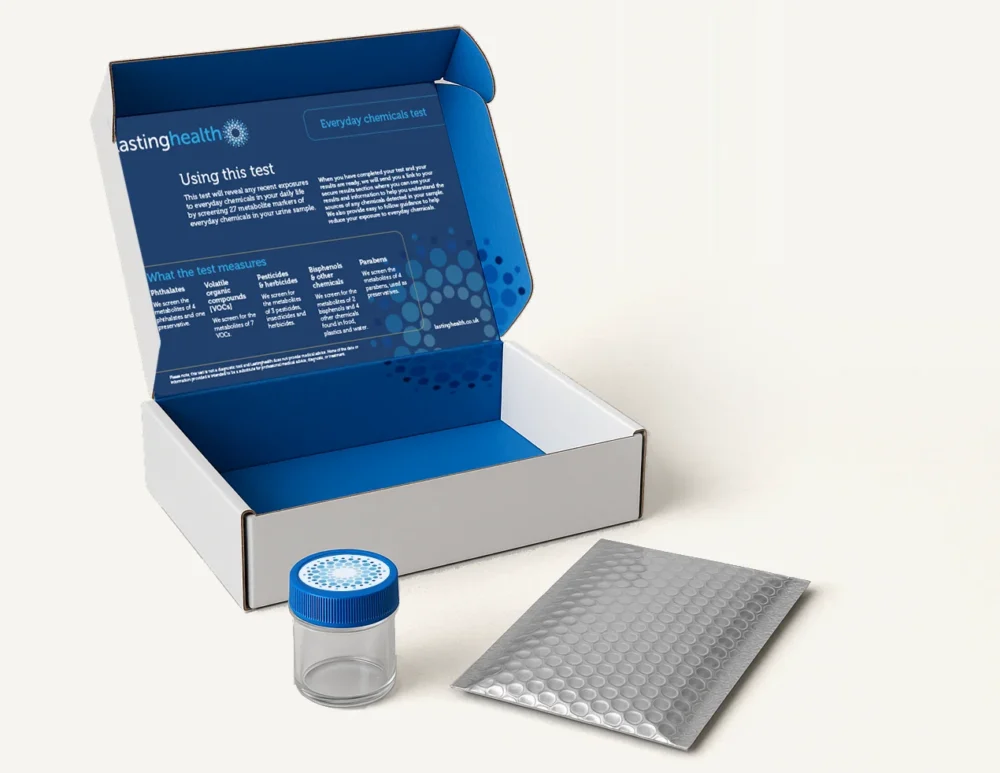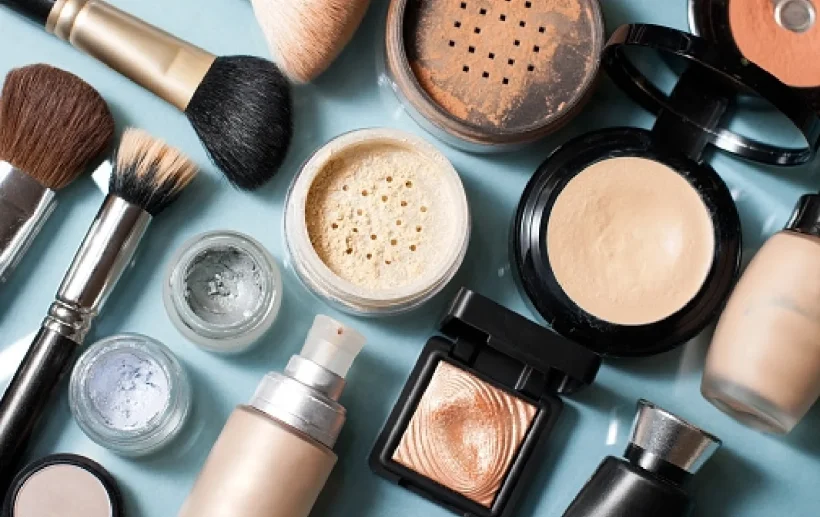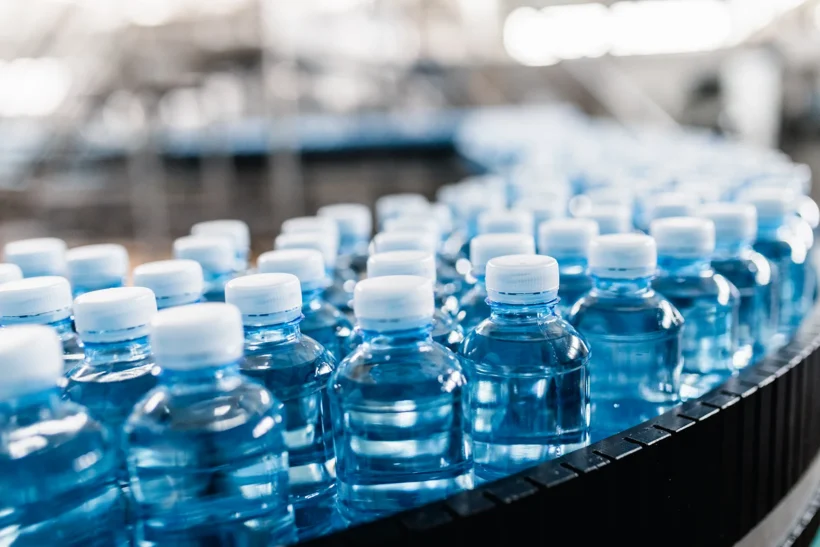What the test
measures
Our test screens 27 metabolite markers of chemicals you might come into contact with at home and in your daily life

Phthalates
Phthalates are widely used in plastic, a blend of a polymers made up of large molecules arranged in groups. The spaces are filled with phthalates to add flexibility – the more required, the higher the proportion of phthalates. For example, flexible tubing such as cables may be manufactured using up to 70% phthalate substances.
Phthalates are widely used to carry fragrances in products such as shampoo, bath lotion, makeup, skincare, and perfumes. They are also used as preservatives in food, toiletries, fragrances, and cosmetics.
Phthalates do not chemically bind to the material they are added to, so they break away easily and leach into food, water, or surrounding air, contributing to microplastics entering our food and water, and through our skin.

Parabens
Parabens are widely used for their preservative and antibacterial properties to keep cosmetics, toiletries, food, and pharmacy products fresh for longer. Parabens help prevent the growth of bacteria, yeast, and mould.
Every time we touch something we transfer bacteria, so parabens are added to keep some facial skincare, cosmetics, and personal care products bacteria-free. Parabens are also used in some food and household products using methyl or ethyl parabens, appearing on packaging as E218 and E214.
Parabens are absorbed through skin and excreted within 2 days in urine, but they have been detected in other body fluids, including breast milk.

Volatile organic compounds (VOCs)
VOCs are chemicals that are released from solids or liquids when they are used or stored. They contribute to poor indoor air quality. VOCs also occur naturally in the environment.
Examples of VOCs include benzene, styrene, and acrylonitrile (used to make acrylics). Some give off an odour, but not all, so exposure is possible even if they can’t be smelled.
VOCs are widely used in paints, aerosols, solvents, petrol, cleaning products, dry cleaning, and air fresheners. Furnishings and floor coverings release VOCs (unless stated as VOC free). They are also released when cooking at high temperatures, burning such as log burners, candles, and cigarette smoke.
Inhalation is the most common form of exposure to VOCs.

Pesticides & herbicides
Pesticides and herbicides are widely used in agriculture and domestic settings to kill insects and to control weeds and unwanted plant growth. They are one of the largest chemical groups in worldwide use.
Glyphosate is the world’s most widely used herbicide in agriculture and domestic weed killers, with strong links to higher cancer risk. It’s classified as “probably carcinogenic” by the International Agency for Research on Cancer (IARC).
Ingestion and inhalation are the most common forms of exposure.

Bisphenols & other chemicals
Bisphenol A (BPA)
BPA is used to harden plastics and combined with other chemicals to make polycarbonate and PVC plastics and epoxy resins. It is banned in the EU for use in food contact materials due to links with serious health risks. BPA can be released as microplastic particles and breaks down very slowly.
Bisphenol S (BPS)
Bisphenol S is synthetic compound used in the production of plastics and resins, commonly found in various consumer products, including food and drink containers, water bottles, thermal receipt papers, dental sealants, toys, cosmetics, and the lining of canned goods. It became more widely used following the ban of Bisphenol A.
Triphenol phosphate (DPHP)
Used as a flame retardant and plasticiser in consumer products such as textiles, cosmetics, electronics, adhesives. It settles as dust which can be inhaled or enter the body via skin contact.
Acrylamide
A bi-product of heating when foods are cooked at high temperatures such as roasting, baking, and frying. Considered to be a potential food-borne toxin. Ingestion and inhalation are the most common forms of exposure to acrylamide.
Perchlorate (PERC)
Widely used in the production of fireworks, flares, and explosives. Trace levels are found in groundwater and soil which can lead to contamination in food and drinking water. Bleach made using hypochlorite can break down into perchlorate. Inhalation, ingestion, and skin contact all contribute to perchlorate exposure.
Oxybenzone (OBZ)
Used in sunscreens for its ability to absorb and convert UV rays including UVB and UVA. OBZ is toxic to aquatic life and has potential endocrine disrupting properties. It is absorbed into the skin via skin contact and inhalation.
